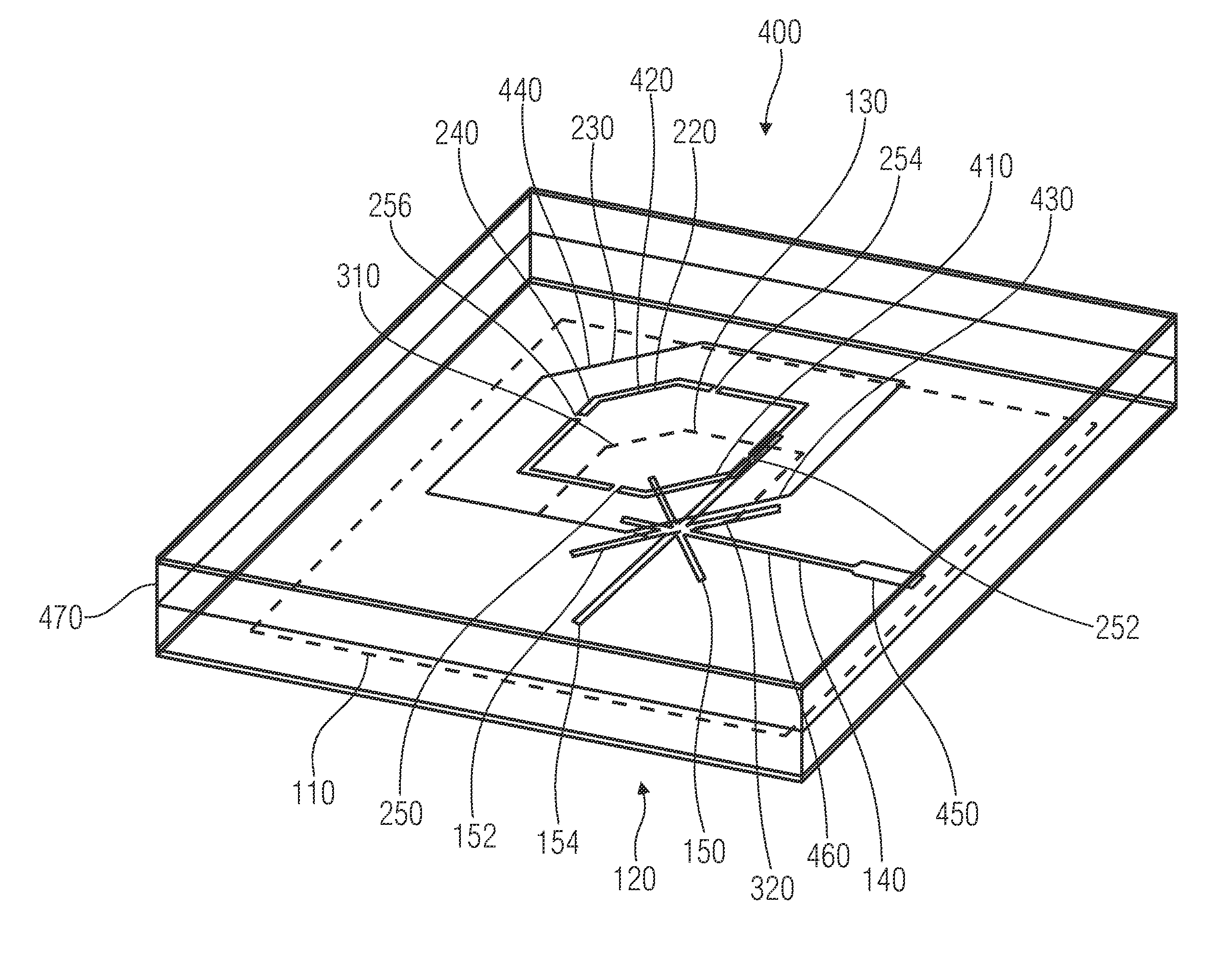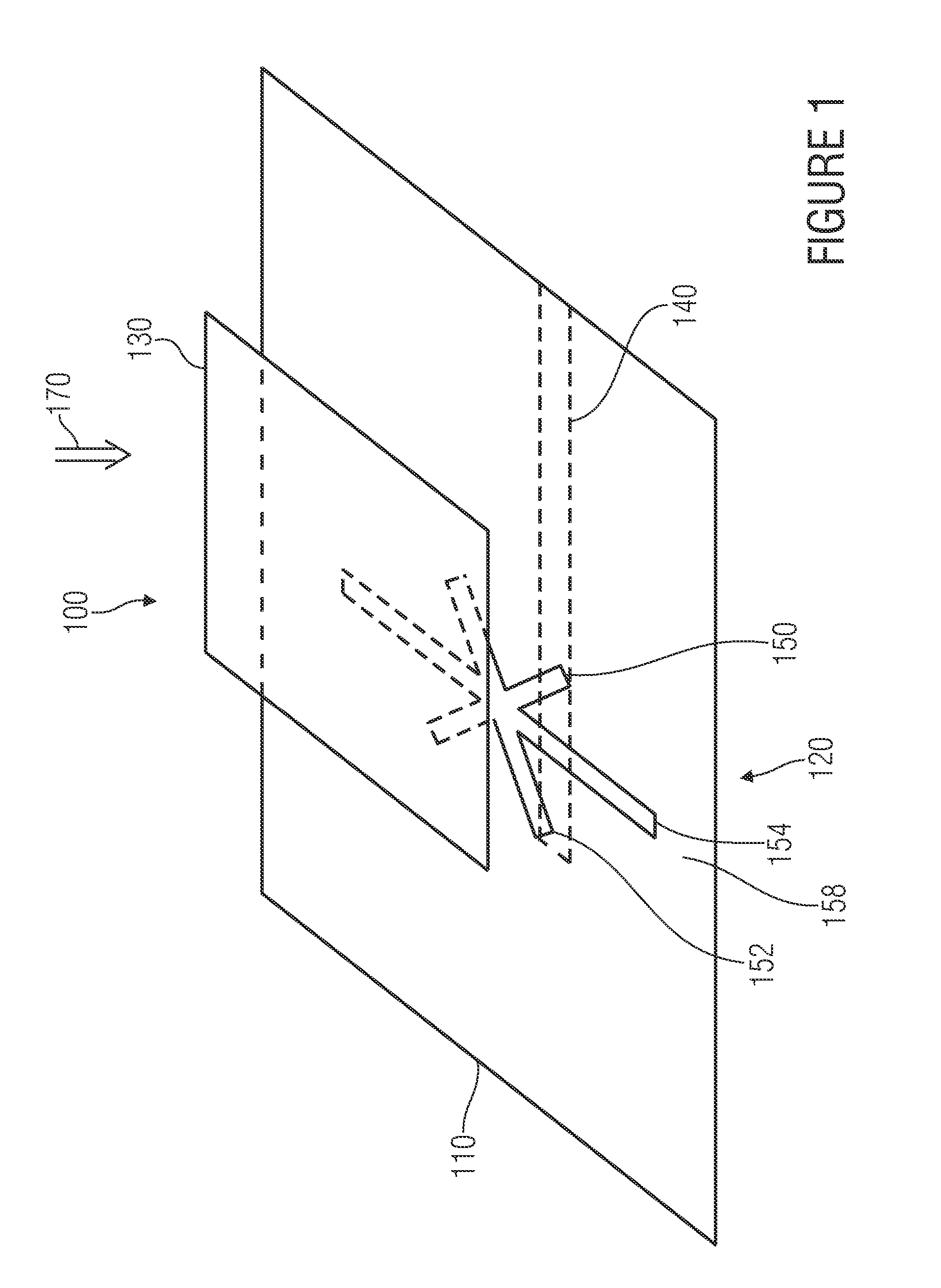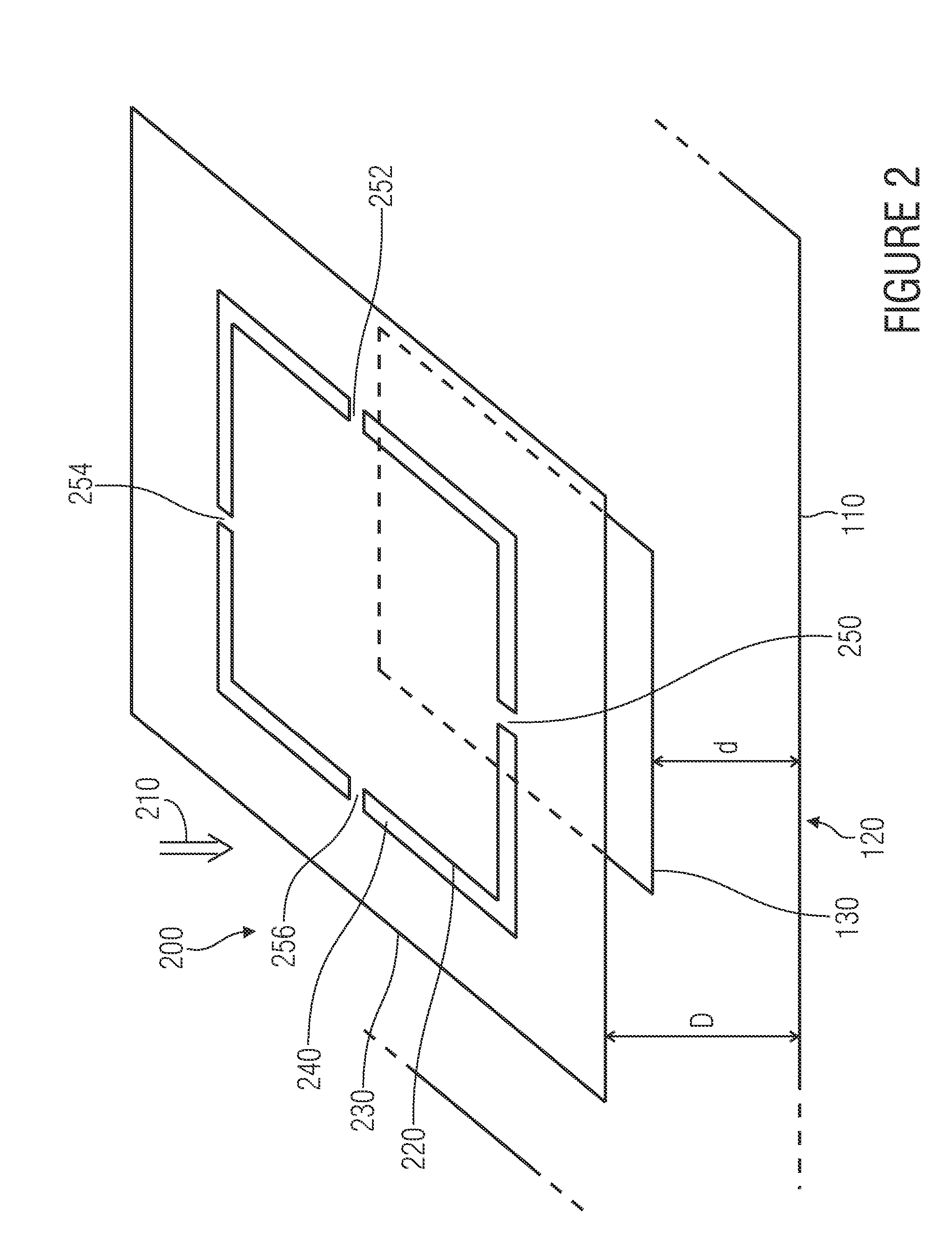Planar multiband antenna
a multi-band antenna and antenna technology, applied in the direction of simultaneous aerial operations, electrical equipment, structural forms of radiation elements, etc., can solve the problems of not being able to use a small cheap antenna, multiplexer to be employed, and difficulty in receiving from several different wireless transfer systems by a single broadband antenna, so as to achieve the effect of increasing the bandwidth of inventive antennas, particularly effective emission of free space, and increasing the bandwidth
- Summary
- Abstract
- Description
- Claims
- Application Information
AI Technical Summary
Benefits of technology
Problems solved by technology
Method used
Image
Examples
Embodiment Construction
[0050]FIG. 1 shows a tilted image of a planar antenna structure from which an inventive antenna structure may be derived. The antenna structure in its entirety is referred to by 100. The antenna structure 100 includes a ground area 110 comprising an aperture 120. In addition, the antenna structure includes a radiation electrode 130 arranged above the ground area 110. A feeding line 140 which is shown here as a conducting strip is arranged below the ground area 110. The aperture 120 includes a first slot 150, a second slot 152 and a third slot 154. The first, second and third slots 150, 152, 154 each have a rectangular shape and represent an opening of the ground area 110. The first slot 150 and the second slot 152 are arranged so as to form a cross. The lengths of the first slot 150 and the second slot 152 in the embodiment shown are equal. The third slot 154 is longer than the first slot 150 and the second slot 152 and intersects the first and second slots 150, 152 in the region in...
PUM
 Login to View More
Login to View More Abstract
Description
Claims
Application Information
 Login to View More
Login to View More - R&D
- Intellectual Property
- Life Sciences
- Materials
- Tech Scout
- Unparalleled Data Quality
- Higher Quality Content
- 60% Fewer Hallucinations
Browse by: Latest US Patents, China's latest patents, Technical Efficacy Thesaurus, Application Domain, Technology Topic, Popular Technical Reports.
© 2025 PatSnap. All rights reserved.Legal|Privacy policy|Modern Slavery Act Transparency Statement|Sitemap|About US| Contact US: help@patsnap.com



